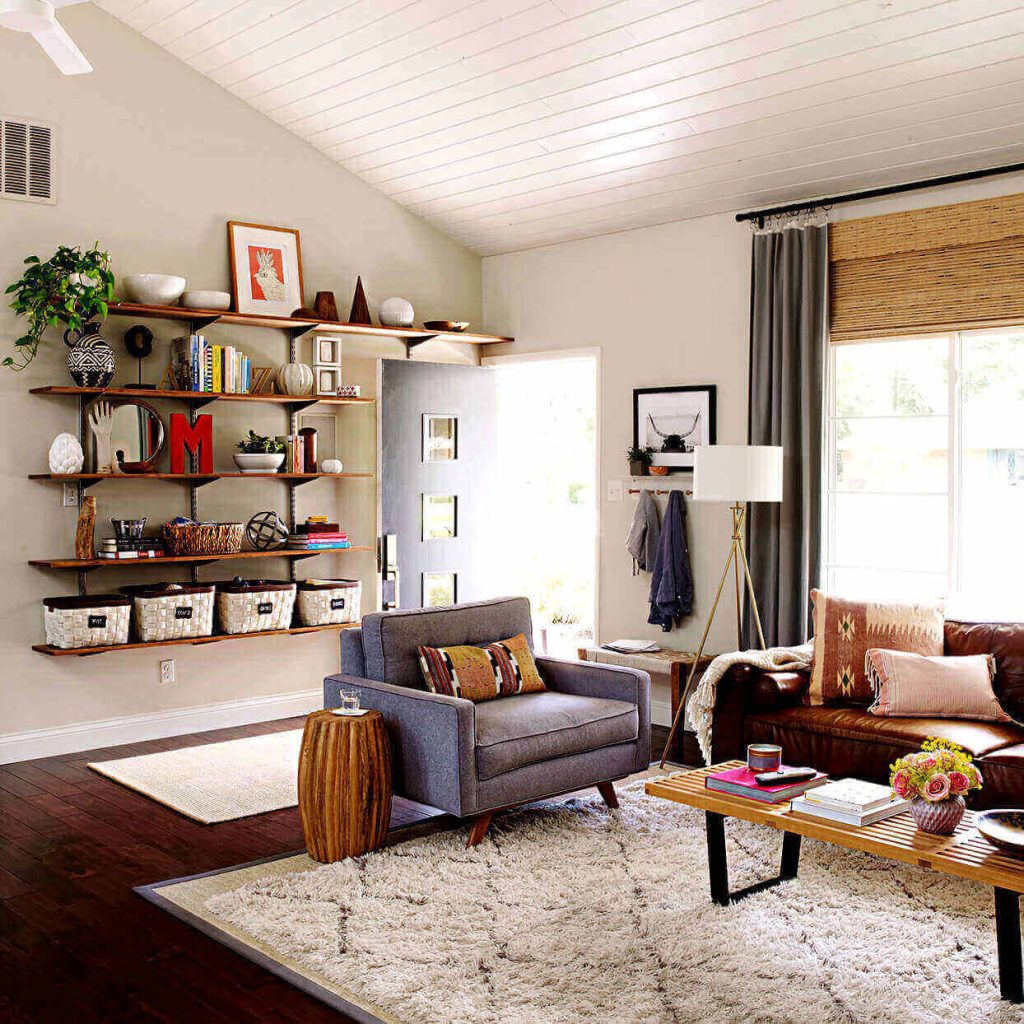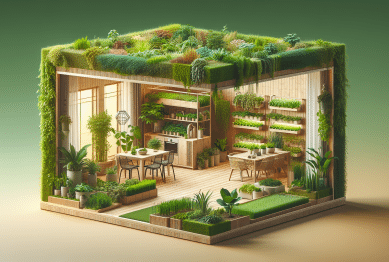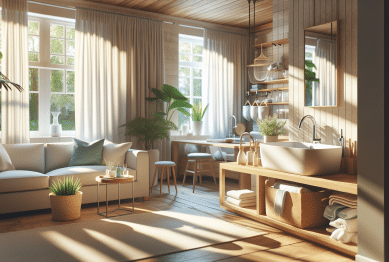Introduction
The trend toward downsizing is on the rise, and tiny houses are leading the charge. These compact, efficient living spaces offer a fresh perspective on homeownership, emphasizing simplicity, sustainability, and financial freedom. As more people embrace the concept of minimalism, tiny houses are becoming a viable solution for those looking to declutter and live with intention. This article explores the key reasons why downsizing to a tiny house could be your next big move.

Understanding the Rise of Tiny Houses
The tiny house movement is a social and architectural trend advocating for the design and construction of small, minimalist homes. Typically, tiny houses are under 500 square feet, yet they are fully functional, featuring all the necessities of traditional homes like kitchens, bathrooms, and sleeping areas. What makes this movement so appealing is its emphasis on a simpler, more sustainable lifestyle that reduces environmental impact and encourages financial independence.
Key Benefits of the Rise of Tiny Houses
1. Financial Freedom
One of the most compelling reasons to downsize to a tiny house is the financial freedom it offers. With the rising costs of traditional homes, many individuals find themselves tied down by large mortgages and maintenance expenses. Tiny houses, in contrast, are far more affordable, with many costing a fraction of a standard home.
- Lower Mortgage or No Mortgage: Since tiny homes are much less expensive to build or buy, many people can avoid taking on a mortgage altogether. This results in significant savings and less financial stress.
- Reduced Utility Bills: With less space to heat, cool, and power, utility bills are dramatically lower in a tiny home. This leaves more money in your pocket each month for savings or other pursuits (Moise et al. 2020).
2. Sustainability and Environmental Impact
Tiny houses are inherently more eco-friendly than traditional homes. Their small footprint means less land is required, and they typically consume fewer resources, from building materials to energy usage.
- Energy Efficiency: Many tiny homes are designed with energy-efficient systems such as solar panels, composting toilets, and rainwater collection, significantly reducing your carbon footprint.
- Minimal Waste: Because space is limited, tiny house living forces owners to adopt a minimalist lifestyle. You only keep what you truly need, leading to less waste and a more intentional way of living (Ashbourn 2014).
3. Flexibility and Mobility
For those seeking a more flexible lifestyle, tiny houses offer unparalleled freedom. Many are built on trailers, allowing owners to move their homes wherever they desire. Whether you want to travel full-time or simply relocate without the hassle of selling a house, a tiny home gives you the option to live where and how you want.
- Travel-Friendly: Tiny houses on wheels (THOWs) enable a nomadic lifestyle, allowing you to explore new areas while still enjoying the comforts of home.
- Zoning Freedom: With the growing popularity of the tiny house movement, more communities are adjusting zoning laws to accommodate these homes, making it easier to find land where you can park or build (Nasta and Stein 2020).
4. Simplified Living and Mental Clarity
Living in a tiny house encourages a shift toward simplicity. With less space, you’re forced to prioritize the essentials, which often leads to reduced stress and a clearer mind.
- Less Clutter: Without the temptation to fill every room with furniture and decorations, tiny house owners embrace a clutter-free environment, which can lead to better mental health and improved productivity.
- Time Savings: Less space means less time spent on cleaning and home maintenance. This frees up your time for more meaningful activities, whether that’s pursuing hobbies, traveling, or spending time with family.
Challenges of the Rise of Tiny Houses
While the benefits of living in a tiny house are numerous, it’s important to be aware of potential challenges before making the switch. Despite the many benefits, the rise of tiny houses also presents certain challenges, such as space limitations and zoning regulations
1. Space Constraints
The most obvious challenge of living in a tiny home is the limited space. For some, the transition from a larger home to a small one can feel restrictive.
- Storage Solutions: Downsizing means you’ll need to get creative with storage. Built-in shelving, multi-functional furniture, and minimalist living will be key to making the most of your space.
- Personal Space: For families or couples, the lack of personal space can be challenging at times. It’s crucial to design your tiny house in a way that allows for privacy when needed.
2. Zoning and Building Codes
While tiny houses are gaining popularity, some areas still have strict zoning regulations that limit where tiny homes can be placed. It’s essential to research local laws and ensure that your tiny house complies with building codes before moving forward.
3. Adjusting to a New Lifestyle
Downsizing is a significant lifestyle change, and it requires a mental shift. Moving into a tiny house can take some time to adjust, especially if you’re used to the convenience of a larger home.
Is the Rise of Tiny Houses Right for You?
If the idea of financial freedom, a reduced environmental footprint, and a simplified lifestyle appeals to you, then joining the tiny house movement could be the right next step. However, it’s important to carefully weigh the pros and cons and ensure that the challenges of tiny house living are something you’re willing to embrace.
Questions to Consider:
- Do you value experiences over material possessions?
Tiny house living encourages a focus on experiences rather than accumulating belongings. - Are you comfortable with minimal space?
While tiny houses are cleverly designed to maximize space, they still require a significant reduction in the number of things you own. - Is mobility important to you?
If you love the idea of taking your home on the road or relocating easily, a tiny house on wheels might be the perfect solution.
Conclusion: The Rise of Tiny Houses
The rise of tiny houses reflects a growing desire for freedom, sustainability, and intentional living. By downsizing, you gain the ability to focus on what truly matters—whether that’s financial independence, environmental stewardship, or a more flexible lifestyle. The rise of tiny houses is reshaping how people think about homeownership and sustainable living. While it’s not without its challenges, the benefits of living in a tiny house can make it a worthwhile and life-changing decision.
For those ready to make the leap into tiny house living, now is the perfect time to explore this exciting trend and see if downsizing is the right move for you.
References:
- Ashbourn, J. (2014). Biometrics in the New World: The Cloud, Mobile Technology, and Pervasive Identity. 2nd ed. London: Springer.
- Nasta, S. and Stein, M.U. (2020). The Cambridge History of Black and Asian British Writing. Cambridge: Cambridge University Press.
- Moise, L., Gutierrez, A., and Khan, S. (2020). ‘New Approaches in Sustainable Living: Tiny Homes and Minimalist Lifestyles’. Journal of Sustainable Architecture, 11(3), 123-139.









